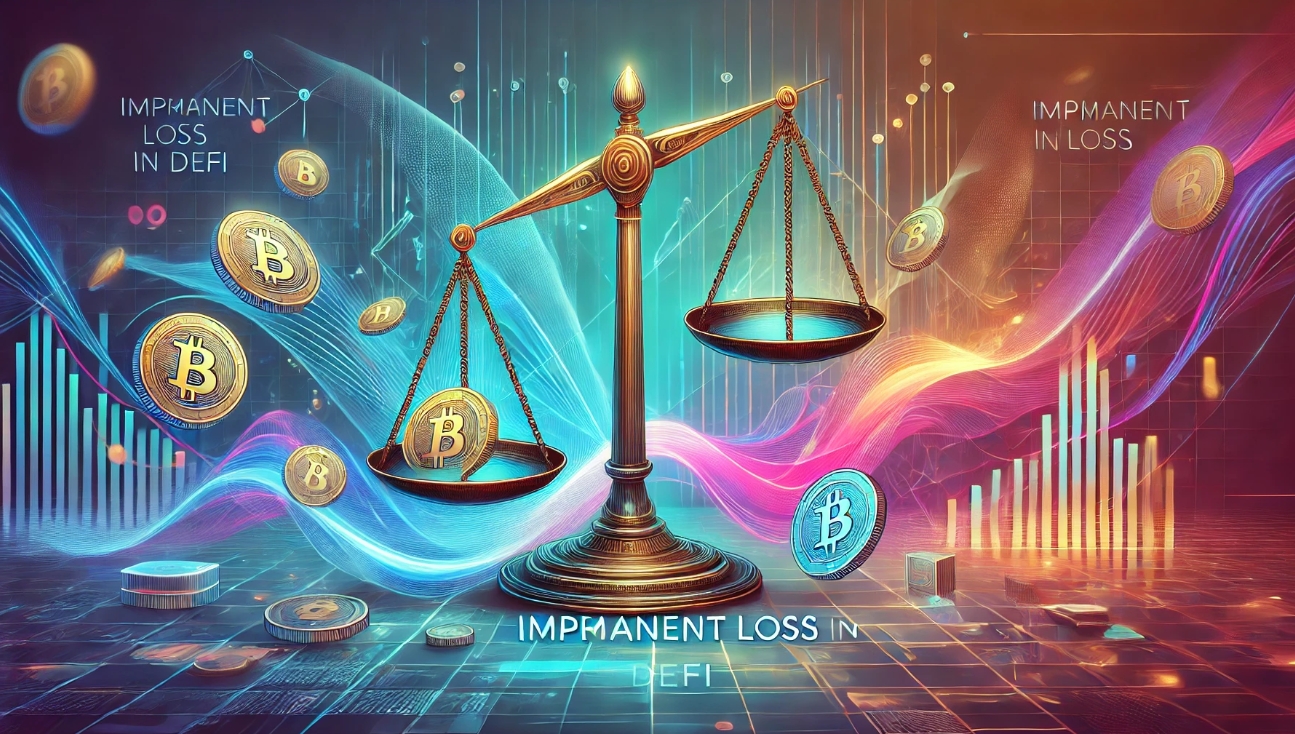With the development of decentralized finance (DeFi), many new earning opportunities have emerged. One such opportunity is providing liquidity for decentralized exchanges (DEX). However, as with any financial activity, there are risks involved.
Contents:
- Definition of Impermanent Loss and Mechanism
- Causes of Impermanent Loss
- Example Calculation of IL
- How to Avoid Impermanent Loss
- Conclusion
Definition of Impermanent Loss and Mechanism
Impermanent Loss (IL) refers to the temporary losses incurred by liquidity providers in a liquidity pool on a decentralized exchange due to changes in asset prices within the pool. These losses occur because the pool automatically rebalances to maintain a certain ratio between the assets. If the liquidity provider had simply held their assets instead of adding them to the pool, they might have achieved greater profit or less loss.
When you provide liquidity to a pool, you typically deposit two different tokens in equal value amounts. In return, you receive a share of the liquidity pool, which grows as trading fees accrue. However, if the price of one of the tokens changes, your share of the pool may decrease compared to if you had simply held those tokens separately.
Key features of Impermanent Loss:
- Occurs due to fluctuations in asset prices.
- The term "temporary" indicates the possibility of recovering the losses if prices return to their original levels.
- The greater the volatility of the assets, the higher the risk of IL.
Causes of Impermanent Loss
Impermanent Loss primarily arises from the price fluctuations of the assets involved in the liquidity pool. Here are the main causes:
- Price Fluctuations: The primary cause of IL is the change in asset prices within the pool. If the price of one of the assets changes, the balance in the pool also changes, potentially leading to losses.
- Automated Market Maker (AMM) Algorithms: AMM algorithms, such as Uniswap, automatically rebalance pools based on current market conditions, which can also lead to IL.
- High Volatility: Assets with high volatility are subject to significant price changes, which increases the risk of IL.

Example Calculation of IL
Let's consider an example to understand how Impermanent Loss is calculated:
Initial data:
- Deposit into liquidity pool: 1 ETH and 100 DAI
- ETH price at the time of deposit: 100 DAI
- Total deposit value: 200 DAI
Scenario 1: ETH price doubles to 200 DAI
- If you had not deposited the assets into the pool, you would have 1 ETH and 100 DAI, with a total value of 300 DAI.
- However, due to automatic rebalancing in the pool, you will have less ETH and more DAI.
IL Calculation:
- Value of assets without deposit in pool: 300 DAI
- Value of assets with deposit in pool: 282.84 DAI (new value of assets in the pool)
- IL = 300 DAI - 282.84 DAI = 17.16 DAI
Thus, your Impermanent Loss amounted to 17.16 DAI, or about 5.72%.
How to Avoid Impermanent Loss
There are several strategies that can help minimize or avoid Impermanent Loss:
| Ways to Minimize IL | Description |
|---|---|
| Investing in Stablecoins | Investing in liquidity pools using stablecoins helps reduce volatility and minimize impermanent losses. |
| Hedging Risks | Applying various hedging strategies, such as using derivatives or options, can protect your assets from adverse price changes. |
| Choosing Pools with Compensation | Participating in liquidity pools that offer compensations or bonuses for participants can help offset potential losses. |
| Regular Market Monitoring | Constantly monitoring the market and responding promptly to changes can help minimize the risks of impermanent losses. |
Conclusion
Impermanent Loss is an important factor to consider when providing liquidity on decentralized exchanges. While this phenomenon can lead to losses, a proper understanding of how it arises and the application of strategies to minimize it can help reduce risks. Ultimately, providing liquidity can remain a profitable activity if approached with due attention and caution.





